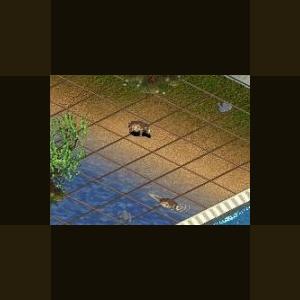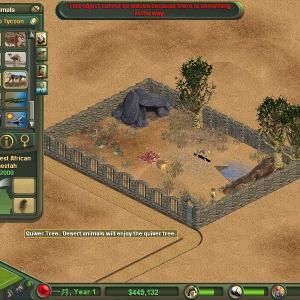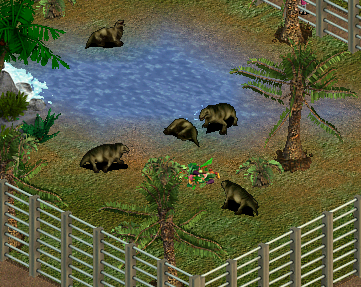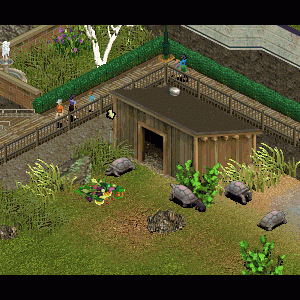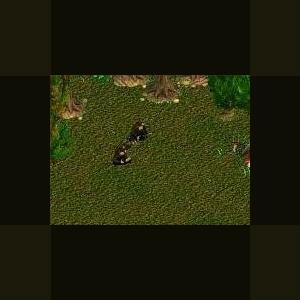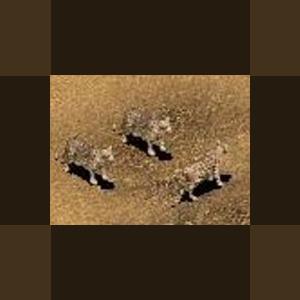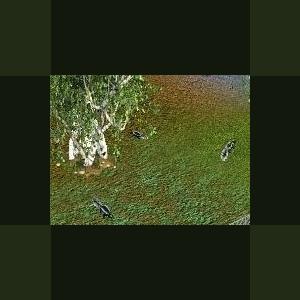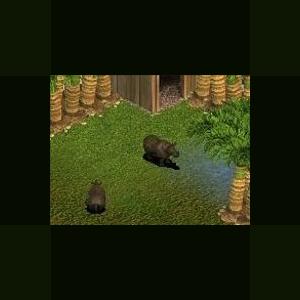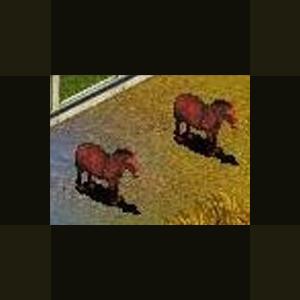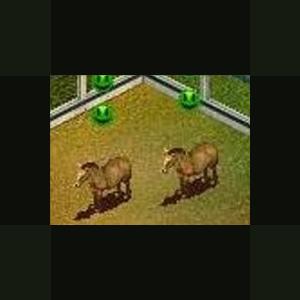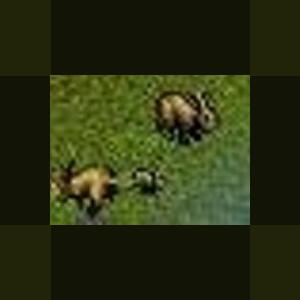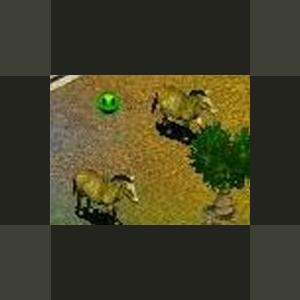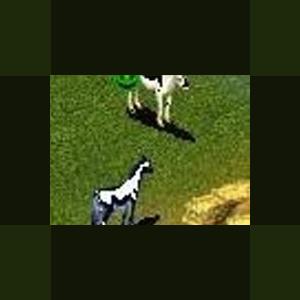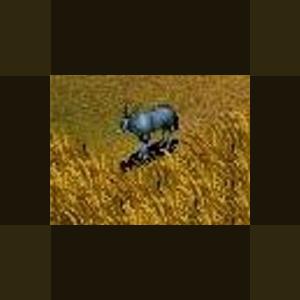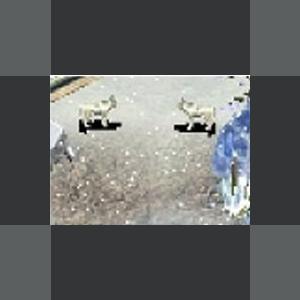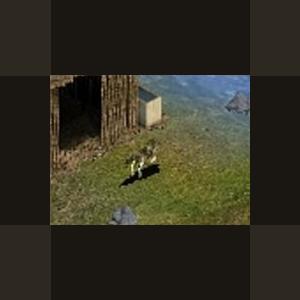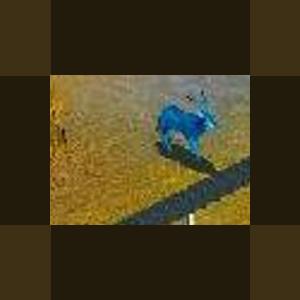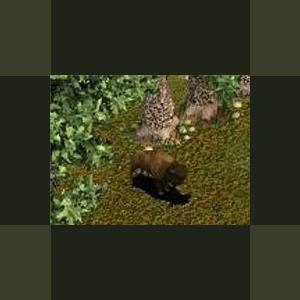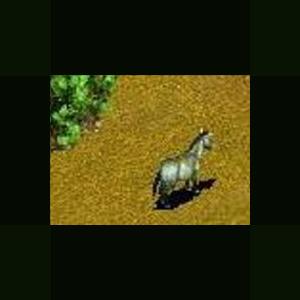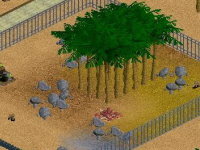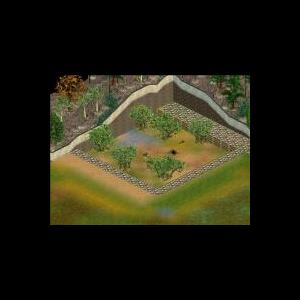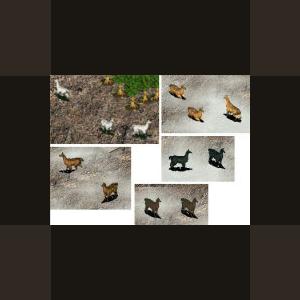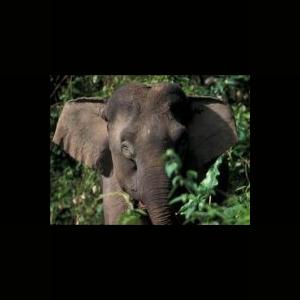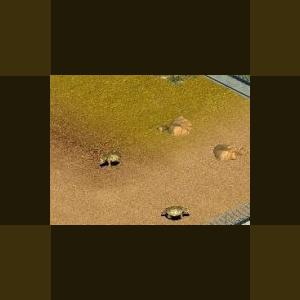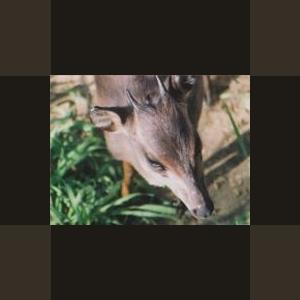279 files
-
Aldabaran Giant Tortoise by Jordan
By Guest
Aldabaran Giant Tortoise by Jordan
Giant tortoise from the Seychelles Islands. Loves to swim!
Updated 2010-10-30
Just to save space with less in zip and smaller image.
Nothing new.
537 downloads
0 comments
Updated
-
Northwest African Cheetah by RDingFT
By Fern
Northwest African Cheetah
Author : RDingFT
Compatibility : All Game Versions
Well I used the cheetah to create a new animal : Northwest African Cheetah :)
To reskin the cheetah, I used Markhor.pal.
The Northwest African Cheetah (Acinonyx jubatus hecki), also known as the Saharan Cheetah, is a subspecies of cheetah found in the northwestern part of Africa (particularly the central western Sahara desert and the Sahel). It is classified as critically endangered, with a total world population estimated to be about 250 mature individuals.
465 downloads
Updated
-
Moschops by P.Rex
By P.Rex
Moschops by P.Rex
Moschops belongs to Synapsida, a group of reptiles ancestral to mammals. It lived during the late Permian period in what is today South Africa. It is a heavily-built herbivore with a massive girth, allowing for fermentation of large amounts of plant matter. It feeds almost exclusively on soft plants, such as ferns, though it may be capable of carnivory in times of extreme famine. Moschops are very timid herbivores that prefer to avoid confrontation, usually fleeing at the first sight of danger.
This Moschops was adapted from the video game "Carnivores" by Action Forms.
625 downloads
Updated
-
Aldabra Giant Tortoise by Vondell
By Cricket
Similar in size to the famous Galapagos giant tortoise but from the opposite side of the earth, the tortoises on the islands of the Aldabra Atoll in the Indian Ocean are some of the largest in the world.
Graphics and animations by Vondell.
Special thanks to Fern and Jay for file checks and assistance.
Please click on the picture to see the animations.
1,646 downloads
Updated
-
Morotopithecus Bishopi by Ghirin
By Guest
Morotopithecus bishopi by Ghirin
Morotopithecus bishopi was an early species of ape.
The fossils of this large-bodied ape were found in Miocene strata in Uganda. The fossils show some of the earliest indications of ape-like locomotion.
References:
http://www.johnhawks.net/weblog/fossils/apes/morotopithecus/
Updated 2010-11-03
Just to save space with less in zip and smaller image.
Nothing new.
280 downloads
0 comments
Updated
-
Persian Leopard by Moondawg
By Guest
Persian Leopard
The Persian leopard (Panthera pardus saxicolor), or Iranian leopard, is one of the leopard subspecies native to western Asia. It is endangered throughout its range in the Middle East.
The Persian leopard is said to be the largest of all the subspecies of leopards in the world. It can grow to up to 1.5 to 2.7 feet tall at the shoulder, and weigh as much as 155 lbs. Before 1990, when Armenia, Azerbaijan, Georgia, Russia, and Turkmenistan were the Soviet republics, the scientific names of the leopard used in these countries were P.p. tulliana and P.p. ciscaucasica, whereas the name P.p. saxicolor had been traditionally used by the western specialists for the cats in Iran and, partially, Afghanistan. There are currently a few hundred left in the world.
It is found in Iran, Azerbaijan, Armenia, Turkmenistan, Uzbekistan, Tajikistan, and northwestern Afghanistan. Habitat varies from mountain steppe to grasslands, or anywhere having a reasonable amount of cover and a supply of prey. Unconfirmed reports of big cats in the far southeast of Turkey might also pertain to these animals; see the Caspian Tiger article for details.
Updated 2010-11-05
Just to save space with less in zip and smaller image.
Nothing new.
484 downloads
0 comments
Updated
-
Striped Skunk by Jordan
By Guest
The striped skunk is a North American carnivore well known for dousing its enemies with smelly spray.
The skunk is Jordan's first animal with from-scratch animations, with the original skunk images from Genki.
Updated 2010-11-06
Just to save space with less in zip and smaller image.
Nothing new.
881 downloads
0 comments
Updated
-
Sumatran Rhino by Jordan
By Guest
Also known as the "hairy rhino," the Sumatran rhinoceros is among the world's most endangered mammals..
In the past 10 years, almost 50 percent of these rhinos have been lost to poaching. Now less than 300 survive in isolated pockets in Southeast Asia. Besides being the only rhino with hair on its body, the Sumatran rhino is also the only two-horned species in Asia. It has rarely been seen because of the dense rainforest and moss forest where it lives. This rhino is considered a descendant of the prehistoric woolly rhinoceros, depicted in Stone Age cave drawings in Europe.
Updated 2010-11-06
Just to save space with less in zip and smaller image.
Nothing new.
497 downloads
0 comments
Updated
-
Cleveland Bay Horse by Sundance
By Guest
Cleveland Bay Horse by Sundance
A beautiful horse by Sundance. Made with help from Jay. Thank you, Jay!
Updated 2010-10-30
Just to save space with less in zip and smaller image.
Nothing new.
273 downloads
0 comments
Updated
-
Champagne Horse by Sundance
By Guest
Champagne Horse by Sundance
A beautiful horse by Sundance. Made with help from Jay. Thank you, Jay!
Updated 2010-10-30
Just to save space with less in zip and smaller image.
Nothing new.
232 downloads
0 comments
Updated
-
European Rabbit by Sundance
By Guest
European Rabbit by Sundance
In several parts of the world the European rabbit is known for the damage and depredation. It was introduced into Britain by the Normans, and introduced from there by settlers into Australia and New Zealand.
Once introduced in the wild its numbers increased and livestock pastures and crops were devastated. In Australia, the near extinction of several types of marsupials can be attributed to competition with rabbits. European rabbits can be prolific breeders. One doe can produce up to thirty young in a single breeding season.
works with ZT, DD, MM and CC.
Updated 2010-11-03
Just to save space with less in zip and smaller image.
Nothing new
389 downloads
0 comments
Updated
-
Azteca Horse by Sundance
By Guest
Azteca Horse by Sundance
A beautiful horse by Sundance. Made with help from Jay. Thank you, Jay!
Updated 2010-10-30
Just to save space with less in zip and smaller image.
Nothing new.
303 downloads
0 comments
Updated
-
Painted Horse by Sundance
By Guest
Painted Horse by Sundance
What's the difference between a pinto horse and a paint horse? Nothing. Although Paint usually is used to describe a registered pinto horse of Quarterhorse and/or Thoroughbred horse breeding, Pinto markings can be found in about any breed.
The British use the terms skewbald and piebald to describe pintos. A skewbald horse is a horse of any other color than black with white spots, while the piebald is a black horse with white spots. Genetically, there are four major paint patterns, the overo, the tobiano, and the much neglected sabino and splash white.
works with zt, dd, mm and cc
Updated 2010-11-05
Just to save space with less in zip and smaller image.
Nothing new.
369 downloads
0 comments
Updated
-
Blue Buck Gems by Sundance
By Guest
Bluebuck by Sundance
The Bluebuck was created by sundance, with fixings by Jay.
The early travellers found the blue antelope only in relatively well-watered country, which suggests that, like the roan and sable, it had to drink regularly. Also like the roan andsable, the blue antelope apparently lived in small herds of up to twenty individuals, and it was primarily a grass-eater or grazer that sometimes fed on the same pastures as sheep.
Updated 2010-10-30
Just to save space with less in zip and smaller image.
216 downloads
0 comments
Updated
-
Arctic Fox by Hit4Life and LAwebTek
By Guest
Arctic Fox by Hit4Life and LAwebTek
Arctic Fox - one of the original downloads from Zoo Tek.
Because of its thick coat, it is able to survive in freezing cold temperatures. Thick hair on the pads of their feet protect their feet from freezing and help them to walk on the ice. The Arctic fox can walk on ice without slipping. It uses ice floes to travel in search of food in the winter.
It can curl up in the snow and cover its nose and face with its bushy tail to keep warm. In the summer the fox will hide food in its den or under rocks. This is how it stores food for later use.
The Arctic fox is small (about the same weight as a cat) with short legs and short rounded furry ears. The bushy tail is about 30 cm. long. Its bushy fur coat makes it look much larger than it really is. Near the end of summer the grayish brown coat of the Arctic fox begins to grow thicker. The color of the fur turns gray and then white. The oily fur sheds water and helps to keep the fox dry.The female may have 4 to 11 pups. The average litter is 6 or 7 pups. She can have two litters a year. The babies are born in a den or burrow in late spring. A baby fox is the size of a kitten. Both parents take care of the blind cubs. At two weeks the cubs open their eyes. At three weeks they go outside and begin to explore.
To feed a litter of ten the parents must kill about thirty lemmings a day. When their family is almost grown, the parents feed them over a hundred lemmings a day! The young foxes are taught how to hunt and are independent by fall. The young males leave the family and form their own groups. The young females stay with the family group.
They prey on voles, lemmings, hares, ground squirrels, birds and birds' eggs. Foxes that live near the coast feed on shellfish, sea urchins and other shore animals. They check the shoreline for dead seals, whales, and dead fish . When meat is not available the Arctic fox eats fruit and berries.
The Arctic fox will even kill baby seals if the fox can find the seal's den in the snow .
The Arctic fox walks along the top of the snow and listens for small animals running under the snow. When they hear something, they jump up and down to break through the snow with their front paws. Once they break through, they can grab their prey.
Updated 2010-10-30
Just to save space with less in zip and smaller image.
Nothing new.
Updated: July 25, 2009 to allow the arctic fox to swim on water terrain without ZT crashing and to change the ztd name because there are multiple arctic foxes amongst the different sites.
Updated: January 15, 2021 by fern to stop the arctic fox from disliking itself.
Current arctic fox_h4_LA.ztd dated 15 January 2021
Note: Previous ztd names: arctic fox.ztd, ArcticFoxbyHit4LifeandLAwebTek.ztd
436 downloads
0 comments
Updated
-
Welsh Pony by Sundance
By Guest
Welsh Pony by Sundance
Here is another equine from that rootin-tootinest (whatever that means), greatest horse lovin' gal on this side of the OK Corral. It is a Welsh Pony by Sundance. Made with help from Jay. Thanks, Jay!
The original home of the Welsh Mountain pony was in the hills and valleys of Wales. He was there before the Romans. His lot was not an easy one. Winters were severe. Vegetation was sparse. Shelter, most often, was an isolated valley or a clump of bare trees. Yet the Welsh pony managed not only to survive, but to flourish
Updated 2010-11-11
Just to save space with less in zip and smaller image.
Nothing new.
319 downloads
0 comments
Updated
-
Blue Buck Sable Antelope by Sundance
By Guest
Bluebuck Sable Antelope by Sundance
This guy is a real cutie! works with zt, dd , mm and cc.
The early travelers found the blue antelope only in relatively well-watered country, which suggests that, like the roan and sable, it had to drink regularly. Also like the roan and sable, the blue antelope apparently lived in small herds of up to twenty individuals, and it was primarily a grass-eater or grazer that sometimes fed on the same pastures as sheep.
Updated 2010-10-30
Just to save space with less in zip and smaller image.
157 downloads
0 comments
Updated
-
Wisent by Ghirin
By Guest
Wisent by Ghirin
The wisent (Bison bonasus) is the Old World member of the bison family. This bison is the largest land animal in Europe and is a forest dweller, unlike the plains bison of North America.
Reference:
www.wikipedia.org
Updated 2010-11-11
Just to save space with less in zip and smaller image.
Nothing new.
363 downloads
0 comments
Updated
-
Mustang by Sundance
By Guest
Another wonderful horse by Sundance.
Updated 2010-11-03
Just to save space with less in zip and smaller image.
Nothing new.
215 downloads
0 comments
Updated
-
African Ruppell's Fox (Sand Fox) by Ghirin
By Guest
African Ruppell's Fox By Ghirin
The sand fox (Vulpes ruppelli), also known as Ruppell's fox, is native to arid and semi-arid regions in northern Africa, Arabia and central Asia, including stony desert, steppes, thornbush savannah, and dry woodland. They have a distinctive call, a "wow" sound ending in two yaps.
Sand foxes live in pairs or small family groups. They build dens, but also tend to move to a new location about once a week. Sand foxes hunt at night, preying on small mammals, insects, fruit and carrion.
Created by Ghirin 2004
Updated 2010-10-30
Just to save space with less in zip and smaller image.
Nothing new.
Updated August 18, 2018 by Cricket so that screenshot would show up again.
626 downloads
Updated
-
Aardvark by LAwebTek
By Guest
Aardvark By LAwebTek
The aardvark is an odd-looking beast, resembling a giant, hump-backed rat with the head of an anteater, the snout of a pig, and the ears of a rabbit. It grows up to seven-and-a-half feet (2.3 meters) long, including its rat-like though thick and powerful tail. Adults average 110-150 pounds (50-70 kg), but may weigh as much as 180 pounds (82 kg).
Scientists placed the aardvark in its own order, Tubulidentata, which means tubule toothed. The name derives from the aardvark’s cheek teeth, which resemble flat-crowned columns. Each tooth is made of numerous tubular pulp cavities surrounded by hexagonal prisms of dentine.
Aardvarks are covered with thick pinkish-gray skin that protects them from insect bites and may even save them from predators. It is scantily covered with bristly hair varying from dull brownish-gray to dull yellowish-gray. Hair on the legs is often darker than that on the body. Low forequarters add to aardvark’s hump-backed appearance. Short, stocky legs end in toes bearing long, straight, strong, and blunt claws. There are four toes on each front foot, five on each hind foot. The toes are webbed at the base.
When pursued by enemies, aardvarks have three choices. The first two are run or dig! The aardvark isn’t known as a fast runner, though it is said to escape with surprising speed. However, aardvarks excel at burrowing. An aardvark digging in soft earth can beat several people armed with shovels! Its powerful forefeet can even tear through hard, sun-baked ground. What about that third choice? If cornered, an aardvark fights back. It may strike with its tail or shoulders or rear on its hind legs and slash with its clawed forefeet. A desperate aardvark may even roll on its back, slashing with all four feet.
Like most animals, aardvarks prefer to simply avoid predators. They have acute hearing, and flee for their burrows at the least hint of danger. But their eyesight seems to be poor; they frequently crash into trees, bushes, and other obstructions when running.
Aardvarks aren’t commonly seen because they’re mostly nocturnal. They usually spend the day in their burrows, curled up in a tight circle, the hind limbs and tail protecting the snout. Sometimes, an aardvark may be seen sunning itself at its burrow entrance in the early morning.
The aardvark is today restricted to Africa. It ranges from southernmost Africa (the Cape of Good Hope) to southern Egypt, but is generally widespread in suitable habitat south of the Sahara Desert. Aardvarks make homes by excavating burrows that are about ten feet (3 meters) long. An aardvark tunnel ends in a chamber large enough for the animal to turn in. (Aardvarks generally enter and exit headfirst.)
Aardvarks that burrow in areas prone to seasonal flooding are sometimes forced to evacuate their burrows. Aardvarks reportedly occupy termite nest as temporary shelters (perhaps when they’ve been flooded out of their burrows!).
Numerous aardvarks may burrow in same vicinity. Their abandoned burrows provide homes for many other animals, including large and small mammal predators, porcupines, some birds, and even crocodiles and pythons. In fact, the aardwolf (which is not related to the aardvark) usually lives in aardvark burrows.
It is its diet that caused the aardvark to evolve a form and habits similar to anteaters and other ant and termite-eating mammals. An aardvark’s powerful claws are adapted to breaking open hard clay termite nests. Its narrow head can be thrust into holes and crevices and it laps up insects with a sticky tongue that can be extended as much as twelve inches (300 mm).
Updated 2010-10-30
Just to save space with less in zip and smaller image.
Nothing new.
968 downloads
0 comments
Updated
-
Alpaca Pack by Ghirin
By Guest
Alpaca Pack by Ghirin
This pack contains 5 extremely well-designed alpacas by Ghirin. They are: fawn, brown, dark brown, black, and white. All 5 alpacas are compatible with one another and with the official llama.
The alpaca (Lama pacos), a relative of the llama, is a domesticated camelid from the Andes Mountains of South America. Unlike the llama, the alpaca has been bred for its wool and is much smaller than the llama. The wool of the alpaca is among the finest in the world, bested only by that of the vicuna and certain breeds of goat.
Alpacas come in two wool varieties, suri and huacaya. The wool of the suri alpaca is finer and straighter than that of the huacaya. It falls in locks along the sides of the suri alpaca. The huacaya alpaca is more common than the suri; its wool is crimpy and gives the huacaya a "teddy bear" appearance. The wool of either variety comes in several colors, from white to black.
The peoples of the Andes domesticated the ancestors of the alpaca approximately 5000 years ago and these animals were used as a source of wealth.
*Inspired by the Zoo Tycoon Brains Trust at the Zoo Tek Zoo Tycoon Forums.
Updated 2010-10-30
Just to save space with less in zip and smaller image.
Nothing new.
693 downloads
Updated
-
Bornean Elephant by Jordan
By Guest
Bornean Elephant
Author: Jordan
http://www.zoo-tek.com/forums/index.php?download=172
Borneo's elephants (Elephas maximus sumatrensis) (Payne et. al. 1985) represent an island population on the perimeter of the distributional range for Asian elephants in Southeast Asia. Their distribution corresponds to the Northeast Borneo Ecoregion of WWF classifications. They are thus likely to be genetically distinct, and may have developed other adaptations from the populations on the mainland and within the central areas of the species' range. Elephants only occur between the Sugut River in north-eastern Sabah and Sembakung River in northern East Kalimantan. Distinct anatomical differences from mainland elephants have prompted some taxonomists to give the Bornean elephant subspecies status (Davies, 1962; Payne et. al. 1985). Despite these differences, often rumoured but never studied, stories persist that Borneo's elephant population may have originated from domesticated elephants released by either the Sultan of Brunei or the Sultan of Sulu, and add a special twist to the mystique of these elephants. The peculiarly restricted distribution on Borneo, the lack of truly fossilised remains and the lack of indigenous names for the species elsewhere on the island, lend credence to this theory but do not confirm it.
Surveys in the early 1990s indicated that Borneo may then have had 1000+ elephants (Dawson, et al., 1996). Recent opportunistic reports indicate that today's population may be higher. There are indications that over the last 15-25 years the elephant population in Sabah has dramatically increased in some localities. Possible reasons are the squeezing and concentration of remaining elephant populations into smaller forest patches due to land use change, and the conversion of primary to secondary forest through commercial harvest of timber, with concomitant alterations of food supply and habitat conditions. However, Borneo's elephants are now coming under very strong extinction pressure. Large-scale conversion of secondary forests to oil palm plantations has begun, and is expected to dramatically increase in the next few years. While elephants do not necessarily require forest to be undisturbed, they do require large tracts of land with plenty of food sources. They readily feed in all kinds of agricultural areas and can cause significant conflicts in areas where their range is fragmented by agriculture. In Sabah, elephants still range over a large connected forest area. Only a few herds are isolated in fragmented, yet still relatively large, forest patches. However, there is a very real danger that the current forest fragments will soon be too small to contain viable populations, and that the large connected forest area will soon be fragmented as planned plantation schemes are carried out. In Sabah, most elephant herds on the border of existing plantation schemes at this time cause little conflict, perhaps indicating that these forest patches are still large enough to supply all the elephants' resource needs. However, the Lower Kinabatangan River, and the Deramakot Forest Reserve much further to the west, are currently developing into major conflict sites. Elephant herd size in this combined area may be up to 500 elephants. The riverine forests of the Lower Kinabatangan, the area's premier remaining elephant habitat, is rapidly being converted to oil palm plantations. The threat of completely disrupting the movements of the resident elephants is very real as the last open habitat "bottle necks" are rapidly being bought up and fenced in by plantations. There are occasional but persistent reports of killings of conflict elephants in the area.
Designed by JordanMK exclusively for Tek Forums.
Updated 2010-10-30
Just to save space with less in zip and smaller image.
442 downloads
0 comments
Updated
-
African Spurred Tortoise by Jordan
By Guest
African Spurred Tortoise by Jordan
The African Spurred Tortoise lives in the deserts of North Africa and is second in size only to the Galapagos Tortoise. It enjoys desert foliage like the quiver tree in its exhibit.
Updated 2010-10-30
Just to save space with less in zip and smaller image.
Nothing new.
629 downloads
0 comments
Updated
-
Blue Duiker by Jordan
By Guest
Body Length: 50-75 cm / 1.6-2.5 ft.
Shoulder Height: 30-40 cm / 12-16 in.
Tail Length: 7-10 cm / 3-4 in.
Weight: 3.8-5.4 kg / 8.4-12 lb.
Females are generally larger than males in this duiker species. The colour of the coat varies with the region from slate grey to grey-brown, with a bluish sheen on the back. The underparts, inner legs, rump, and underside of the tail are whitish. There is a light eye-brow ridge which curves up to the base of the horns, as well as a glandular slit underneath the eye. The horns are strongly ridged and short, growing 2-10 cm / 0.8-4 inches long. The horns are sometimes absent in females, or hidden by the short head crest.
Gestation Period: 7.5 months.
Young per Birth: 1, rarely twins.
Weaning: By 5 months.
Sexual Maturity: Females at 9-12 months, males at 12-18 months.
Life span: 10-12 years.
Kids lie concealed away from the mother for 2-3 months. At this point their coat changes from reddish brown to the grey-blue colour of adults.
The blue duiker is mostly active at night and at dawn and dusk. Bonded pairs patrol their territory, which are 2.5-4 hectares in size, regularly marking them with scent clues from their pedal glands (situated between the hooves), facial glands, and from defecating. Both sexes chase off any intruders, but will remain tolerant of their own young until they reach 18 months of age. The mother and young contact through soft groaning calls, both freezing at the slightest alarm. Males may emit a whistle or a sneezing sound to raise the alarm. Population densities of up to78 per square kilometer have been recorded in Gabon.
Family group: Solitary or in mating pairs.
Diet: Leaves, buds, shoots, grasses, fruit, insects, eggs.
Created by Jordan, Zoo Tek Designer, 2005.
*Inspired by the Zoo Tek Nature Encyclopedia. (www.zoo-tek.com)
Updated 2010-10-30
Just to save space with less in zip and smaller image.
369 downloads
0 comments
Updated

